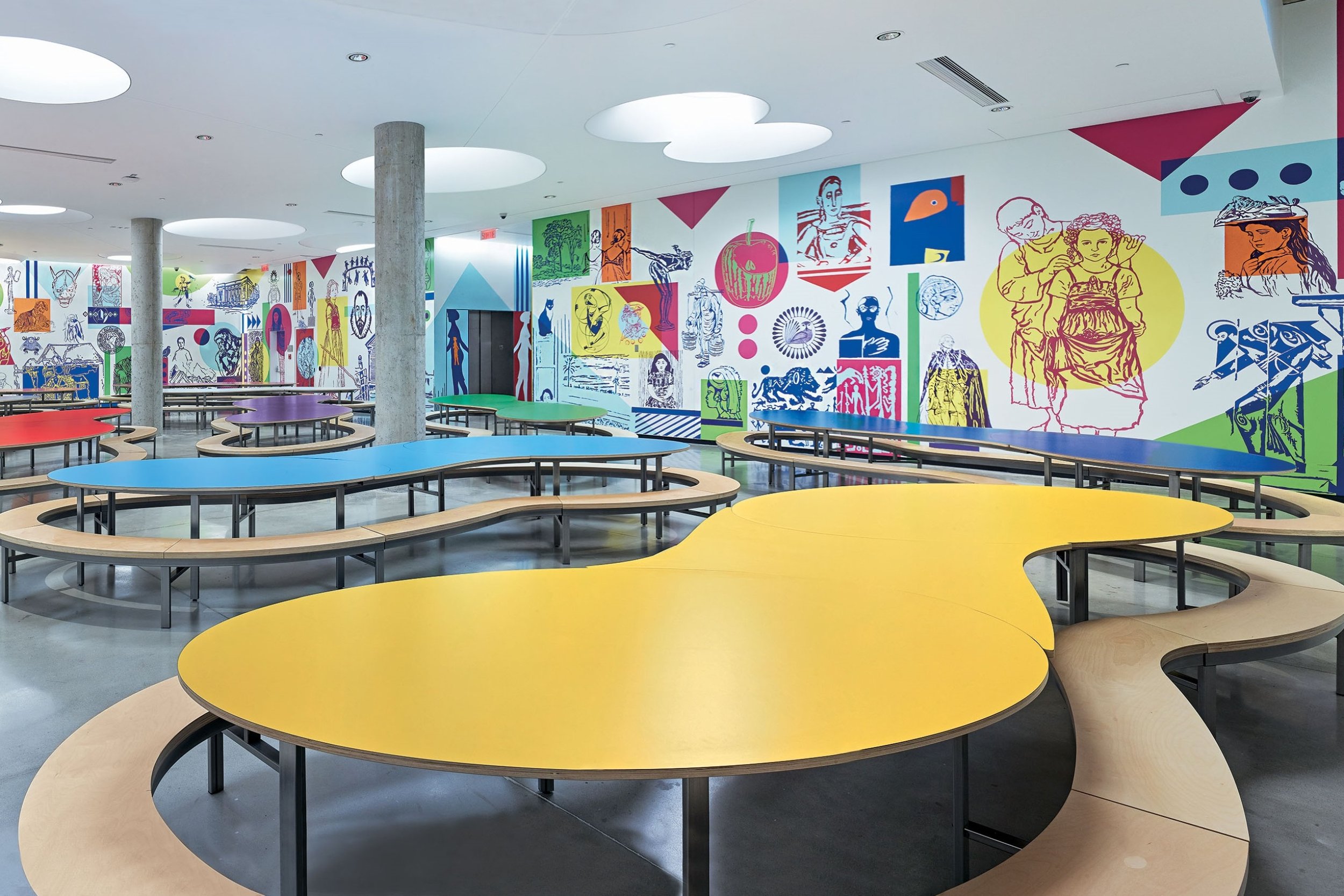Research
Jo Underhill
Almost 190 people were part of the research at Kettle's Yard gallery in Cambridge
Art Museums Could Change Thinking Process
May 6, 2025 By Harriet Heywood, BBC News
Visiting an art museum could change how we think about our lives, according to researchers.
A University of Cambridge study found people's ability to think in abstract ways was boosted by admiring art.
The results were measured after a group of 187 people were encouraged to judge the beauty of artwork at a Cambridge gallery. Study author Dr Elzė Sigutė Mikalonytė said abstract cognitive processes were being lost "in a world of screens and smartphones".
Engaging with artistic beauty helped people escape the "mental trappings of daily life", researchers also concluded.
The study leaned on more subtle pieces of work to see what thoughts they provoked
The study participants were shown a clay exhibition at Kettle's Yard gallery in Cambridge for the research.
One group was asked to rate the beauty of each ceramic object, while the other simply looked at the art. Senior study author Prof Simone Schnall said ceramics were "ideal" for the research.
"A glorious painting by an old master would be too striking," she said. "We needed art that is subtle in form, requiring a focused contemplation of the nature of beauty."
The group who were asked to judge the art's beauty demonstrated more abstract thinking, compared with the group who simply looked at it. Dr Mikalonytė said the tests were designed to analyse how a person was thinking.
"It's becoming much rarer to zone out and just let the mind wander, but that's when we think in ways that broaden our horizons," she said.
"Admiring the beauty of art may be the ideal way to trigger the abstract cognitive processes increasingly lost in a world of screens and smartphones."
Sistine Chapel, Spencer Platt/Getty Images
Neuroscientist Reveals the Profound Real-World Benefits Art Has on Our Brains
March 2, 2021 By Devorah Lauter
“In the last couple decades, neurological findings have shed light on what happens to the brain when it experiences art. Pierre Lemarquis’s book, L’art Qui Guérit (Art That Heals) details this new sub-field of “neuroaesthetics” which uses technologies like functional Magnetic Resonance Imaging to examine which brain pathways are engaged by either making or contemplating an artwork, and to what extent they are stimulated…
Lemarquis explains that, in a process helped by mirror neurons, activated when observing art, we can get the feeling that we are participating in art’s creation, or putting ourselves in the artist’s shoes. Our brains even have a tendency to “think” they are interacting with a biological entity when perceiving a figurative painting of a person, for instance…
It can be hard to pinpoint what we feel about an art piece. That is in part because our reaction is the dynamic result of neural stimulation that combines areas of the brain that normally don’t operate together: the deeper recesses of our minds, which govern the pleasure and reward system, as well as other systems dealing with knowledge, perceptual, and motor circuits. Lemarquis writes that, as a result of these processes, we start to experience “aesthetic empathy,” or the impression that an artwork is part of us—that we’ve embodied its “spirit…”
As Lemarquis explains, the art-activated areas of our brains that light up when both making or contemplating art, release hormones and neurotransmitters when stimulated, which are beneficial to our health and make us feel good. These include dopamine, serotonin (found in antidepressants) as well as endorphins and oxytocin, which both can support pain management and reduction. Adrenaline and cortisone can be activated so as to have an invigorating effect on the body, or on the contrary, they can be blocked for a relaxing effect, depending on the artwork.”
ACRM.org
How the Brain is Affected by Art
American Congress of Rehabilitation Medicine
”There is increasing evidence in the field of neuroscience that art enhances brain function by impacting brain wave patterns, emotions, and the nervous system. Art can also raise serotonin levels. These benefits don’t just come from making art, they also occur by experiencing art. Observing art can stimulate the creation of new neural pathways and ways of thinking.
In a study conducted by Professor Semir Zeki, chair in neuroaesthetics at University College London, participants underwent brain scans while being shown images of paintings by major artists. The study found that when people viewed the art they thought was most beautiful, blood flow increased by as much as 10% to the reign of the brain associated with pleasure — the equivalent to looking at a loved one. Art accesses many of the advanced processes of the human brain, such as intuitive analysis, expressivity, and embodied cognition.”
Courtesy of Minneapolis Institute of Art
Empathy Interventions: Minneapolis Institute of Art Experiments with Cultivating Empathy in Museum Visitors
Apr 28, 2021 By Alice Anderson & Karleen Gardner
“While numerous studies link empathy to positive societal outcomes—like reduced prejudice, decreased inequality, and improved health—others show it is on the decline in our increasingly divided and disconnected world. Art can be a powerful tool for reversing this trend. In fact, though today the term empathy applies to many contexts, it was first born out of the visual arts...”
Montreal Museum of Fine Arts: Rainbow Hall, Marc Cramer
Doctors Can Now Give Out Prescriptions for a Visit to the Museum
July 6, 2019 By Katie Sehl, Fortune.com
“According to resident art therapist Stephen Legari—the first appointed full-time to a museum in North America—art can be a supplemental remedy for a host of ailments, from mental health disorders (such as depression or anxiety) to Alzheimer’s disease to cardiac arrhythmia. Art for heart’s sake, if you will. Or perhaps a family caring for an unwell child could benefit from some visual therapy…”







